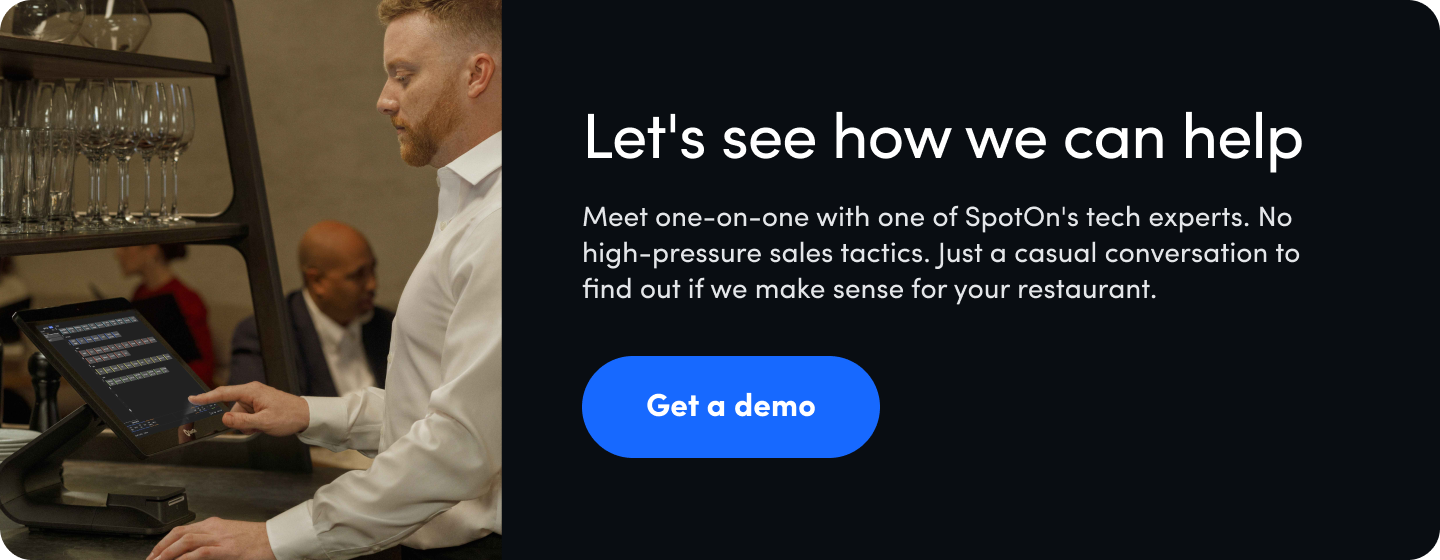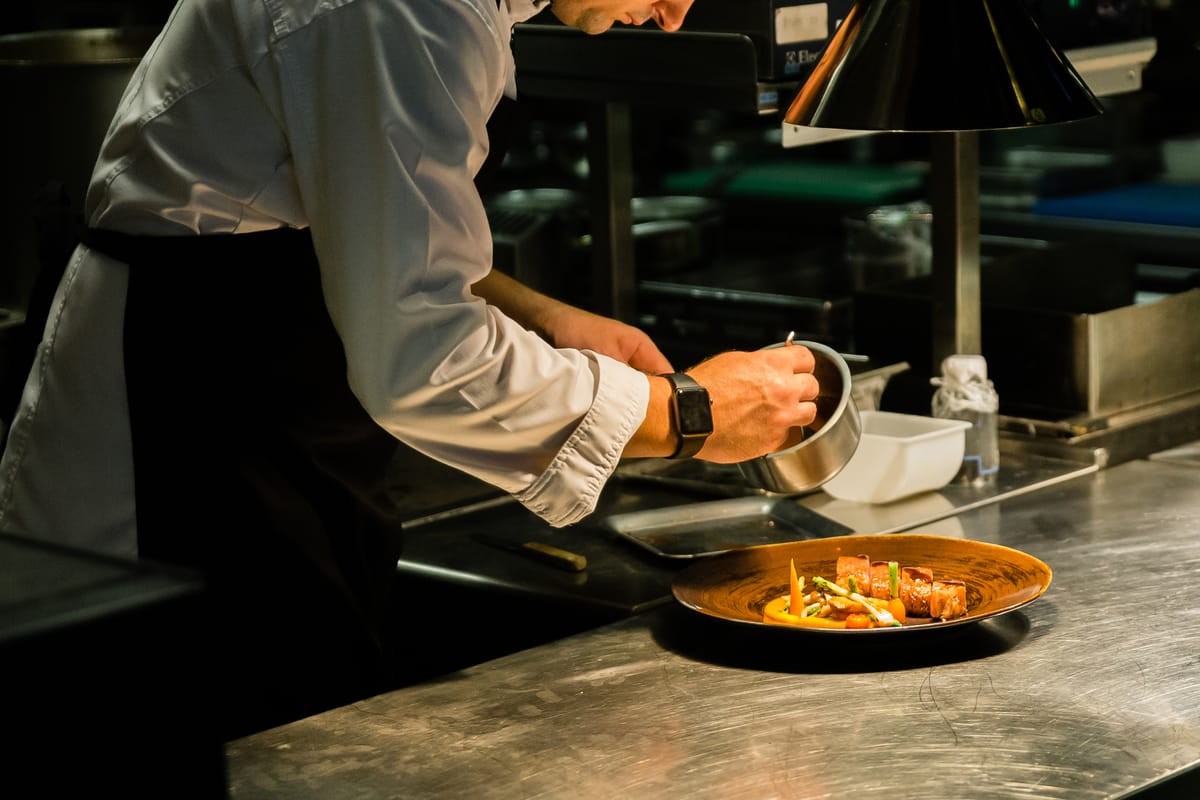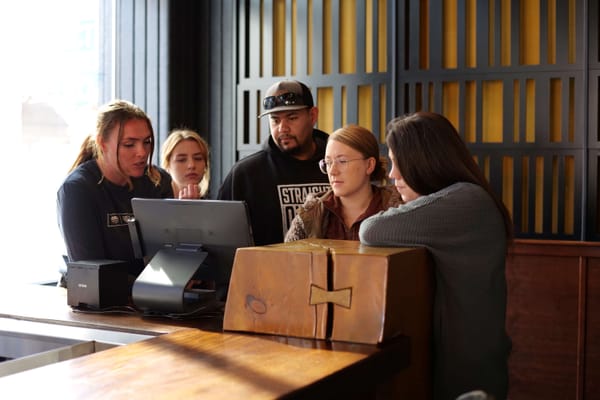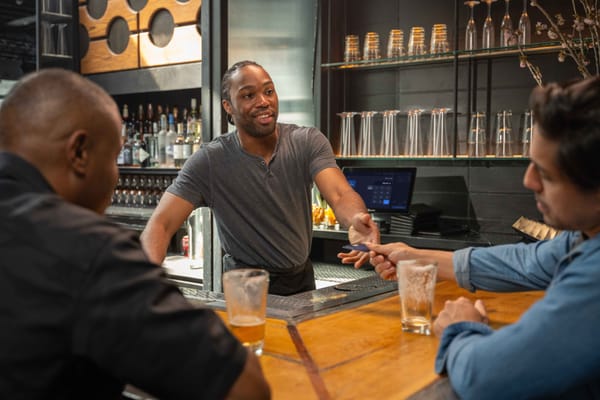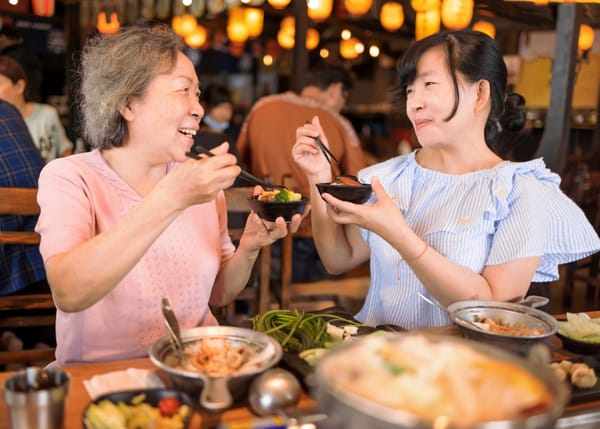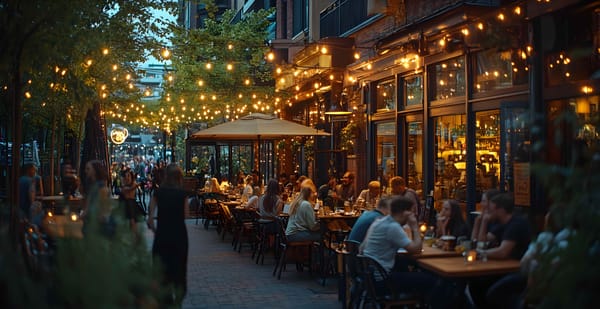Restaurants come in many shapes and sizes. It's what makes the restaurant industry such a vibrant, innovative space. There's no wrong way to create a restaurant concept, as long as it's authentic to your vision and well-received by guests—which is easier said than done.
Full service restaurant concepts fall into two broad categories: casual dining and fine dining. Casual and fine dining restaurants offer different menus and experiences to guests and require different expertise and operational knowledge for success.
If you run a restaurant, a clear vision of your concept will help you train staff, set goals, and deliver on your guests' expectations. If you're a guest, it's good to know what to expect from a fine dining vs casual dining experience. From the white tablecloths to the salad bar in the dining room, here's how to distinguish a casual dining restaurant from a fine dining restaurant and all the concepts that exist in between.
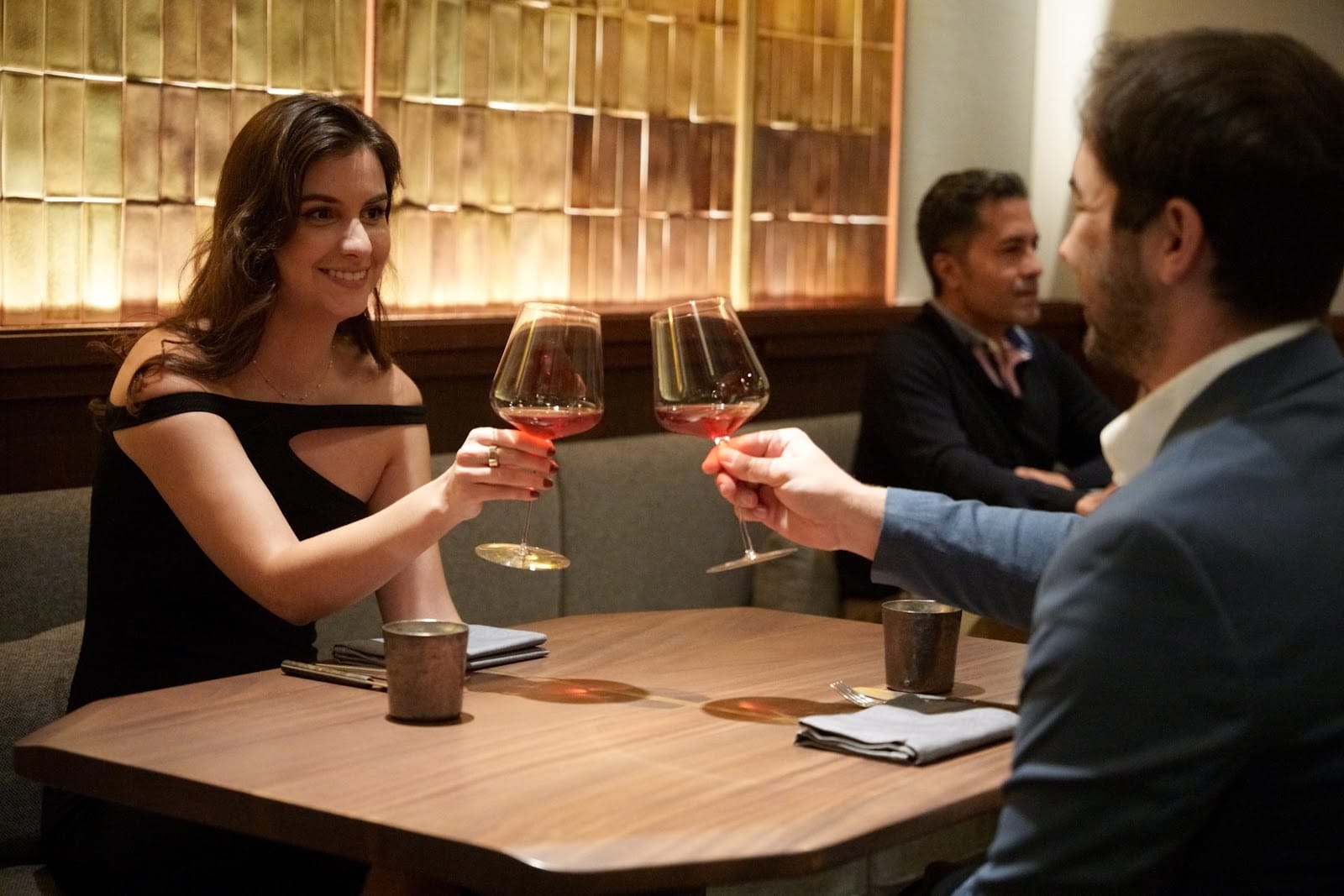
10 Differences Between Casual and Fine Dining
1. Menu style
At a casual dining restaurant, you can usually expect a more diverse menu that caters to many different tastes. At many casual eateries, larger menus will include different iterations of the same ingredients, like a cheeseburger alongside a patty melt. You can also expect more shared appetizers and side dishes.
Fine dining menus are more limited and often feature luxury and gourmet ingredients that are locally sourced or top quality. Many fine dining restaurants offer set menus or small plates that are coursed by the server.
2. Price
Casual restaurants are typically more affordable than fine dining establishments. A night out at a casual restaurant costs around $15 per person, according to Restaurant Business Online. Casual dining restaurants are typically pricier than fast food restaurants, though they can sometimes be on par with fast casual restaurants.
Casual dining restaurants are the biggest (and broadest) category of restaurants, including everything from buffet-style restaurants to more upscale restaurants that have a casual atmosphere. Casual restaurants are more likely to offer deals or pricing events, like happy hour. Some casual dining menus offer specials that include a choice of appetizer, main course, and dessert for an affordable price.
The checks at fine dining restaurants are more expensive. A meal can range anywhere between $80 and $350 per person. Fine wines and extravagant cocktails can add significant costs to prix fixe menus, which are common at fine dining restaurants. So can gourmet add-ons like caviar, oysters, and premium cuts of meat or fish.
While some fine dining restaurant concepts cater to more cost-savvy guests (especially during restaurant week), many fine dining guests don’t consider price as the top concern when choosing the restaurant or ordering their meal. Creating a memorable dining experience that gives guests good value for money is essential to a great fine dining experience.
3. Atmosphere
A restaurant's atmosphere is hard to define but usually incorporates elements like music, decor, lighting, and seating arrangements. Fine dining restaurants often strive for a more sophisticated ambiance by dimming the lights, playing subtle background music, and spacing out tables. Fresh flowers, handmade ceramics, and high-quality and comfortable furnishings can also contribute to an upscale ambiance.
On the other hand, casual dining establishments are known for having a more inviting atmosphere that feels a little more like someone's home dining room. The welcoming feeling is more important than the refined atmosphere, which is why families or guests with small children usually prefer casual dining restaurants. The lighting is brighter, the music is less curated, and the decor can range from minimal to maximalist (think knickknacks and posters on the wall).
4. Target clientele
In the restaurant industry, as in life, it's impossible to appeal to everyone. A casual dining restaurant has a broader audience than a fine dining restaurant. Casual restaurants appeal to families, people looking for an affordable or quick bite, and large groups. Fine dining venues usually seat couples or groups of four, often adults with extra spending money.
5. Table service
At fine dining restaurants, guests can expect full table service from a knowledgeable server (and potentially sommelier) who guides them through the menu and takes their orders. Occasionally, fine dining concepts have classic dishes prepared tableside, creating a unique dining experience.
At casual dining establishments, guests are more likely to order and pay with technology like QR codes or order with a server using a handheld pos system. At some fast-casual restaurants, guests order at the counter before being seated at a table. Casual restaurants are also more likely to offer online ordering that works in sync with their casual dining pos system.
6. Staff experience
Many people start their careers in casual dining settings. The more laid-back setting and broad range of roles make casual dining restaurants great places to learn more about the industry without formal experience.
At fine dining establishments, the staff undergoes extensive training and knows how to deliver impeccable service. They'll have in-depth knowledge about the menu, ingredients, and beverage offerings. A fine dining pos system is helpful for keeping track of extensive wine and bourbon inventory or rotating menus. A more professional staff means the fine dining service often appears seamless compared to other restaurants.
7. Dress codes
Some fine dining establishments recommend (and enforce) a formal dress code, encouraging guests to refrain from wearing shorts, sneakers, flip-flops, or other overly casual clothing. Occasionally, they'll require blazers for men. However, as people are dressing more casually in general, the formal attire dress code is less common.
Casual dining restaurants are come-as-you-are, though guests are usually expected to follow the typical "no shoes, no shirt, no service" rule.
8. Menu items
At a fine dining establishment, you can expect more refined menu items that are carefully sourced and thoughtfully plated. A fine dining establishment can offer any type of cuisine, from French to Japanese to Filipino to Ethiopian. Fine dining establishments often prioritize quality over quantity, creating smaller plates rather than large, family-style portions.
9. Reservation experience
Both fine and casual dining restaurants take reservations, but you're more likely to walk in at a casual dining spot due to more tables and longer hours. Many fine dining spots offer limited reservations that can cause stiff competition among potential guests.
These days, most restaurants use a restaurant reservation system rather than phone calls to handle bookings and waitlist management.
10. Goals
From an operator's perspective, fine dining restaurants have different goals from casual dining. All restaurants want to make money and delight their guests with excellent food—something that's easier said than done.
A fine dining concept might aspire to be featured on a Michelin list or win a James Beard award. Casual dining concepts might aim for longevity or expansion, even franchising like Olive Garden.
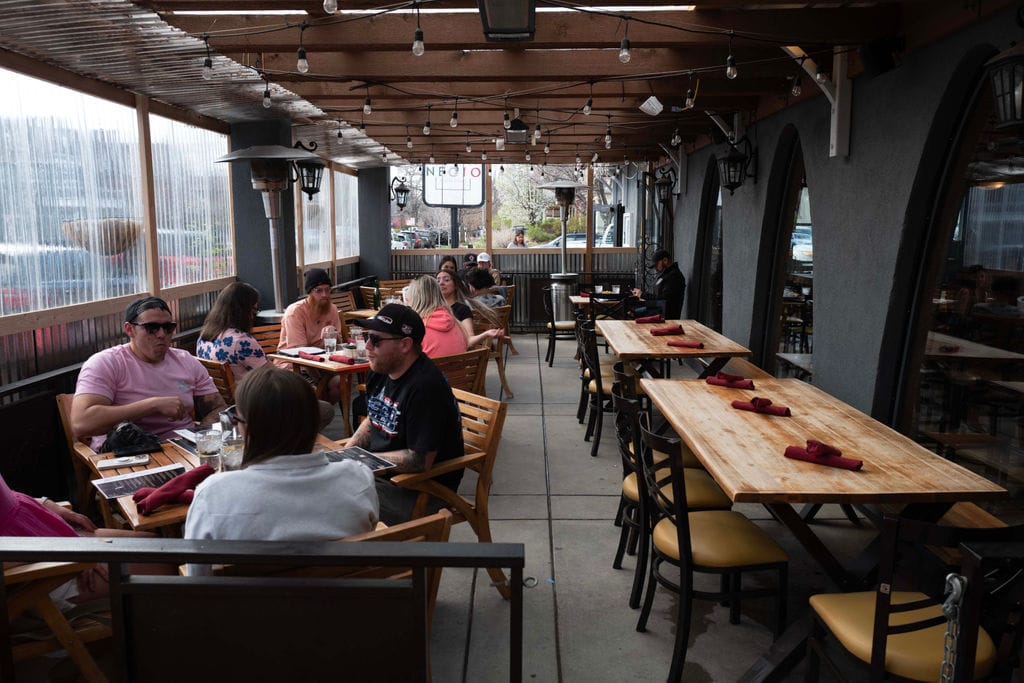
Different concepts, same excellent guest experience.
While there are distinct differences between restaurants in different categories, there's no prescriptive rule that says a fine dining restaurant must have expensive table settings, or a casual dining restaurant needs a laid-back, relaxed ambiance.
White tablecloth restaurants, family-style restaurants, crab shacks, and omakase concepts might appear different, but they all have the same overarching goal: to deliver an excellent guest experience.
